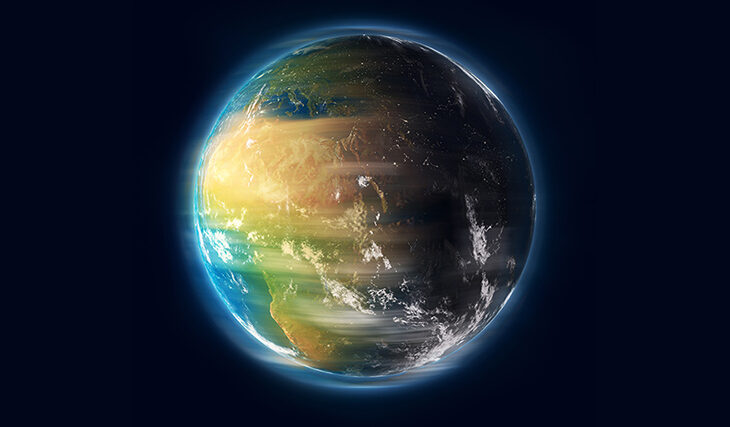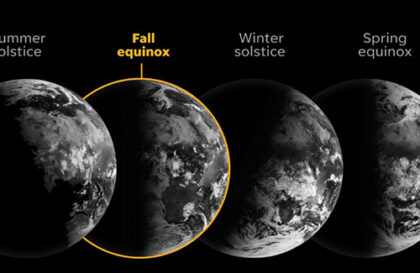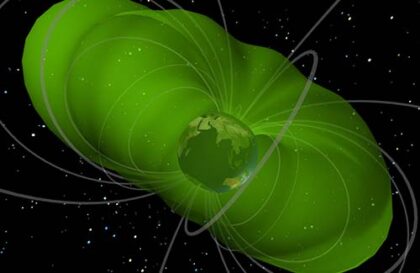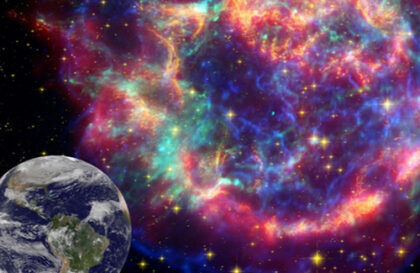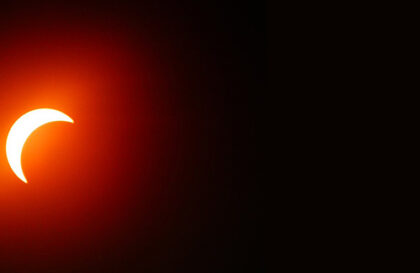How does the earth rotate?
The earth rotates the way it rotates. One revolution in 86,400 seconds or 24 hours.
But the Earth’s rotation slows down with time, and the length of the day increases by 1.8 milliseconds per century. This leads to the fact that 600 million years ago, the day lasted only 21 hours.
Factors that affect the length of the day include the tidal effects of the Moon and Sun, the interaction between the Earth’s core and mantle, the overall distribution of mass on the planet, seismic activity, glaciation, weather, the oceans, and the Earth’s magnetic field.
In 2020, it was discovered that the Earth began to rotate faster than at any time in the last 50 years, and the shortest 28 days on record occurred in 2020.
Experts aren’t entirely sure why the Earth’s rotation will increase in 2020, but they speculate that it could be due to the melting of glaciers in the 20th century or the accumulation of large amounts of water in northern hemisphere waters (?).
It is believed that the increase in the Earth’s upward rotation is a temporary effect, and in the future, the planet will begin to slow down again.
And if the Earth starts to rotate in the opposite direction. Venus is spinning in the opposite direction.
The earth rotates the way it rotates. And Venus rotates in the opposite direction.
If the Earth rotated like Venus
A change in the direction of the Earth’s rotation is a hypothetical scenario. However, we will consider the possible consequences of such a scenario based on the existing knowledge in the field of astronomy and climatology.
Let’s assume that the Earth begins to rotate in the opposite direction. First of all, such an event would require enormous energy and physical processes that are currently beyond our understanding and technological capabilities.
The most noticeable consequence of the change in the Earth’s rotation is the change in the motion of the Sun on the celestial sphere. The sun would rise in the west and set in the east. This astronomical effect would cause significant changes in the lighting regime and temperature conditions on the planet’s surface.
In a paper by University of Pennsylvania astrophysicist Kevin Luman, the scenario for changing the direction of the Earth’s rotation requires taking into account historical and geological factors, as well as the influence of external forces, such as collisions with other celestial bodies. A similar event, like a collision, can change the direction of the planet’s rotation, but also drastically affect the internal conditions.
One of the key aspects to consider is the change in the Coriolis effect, a physical phenomenon associated with the rotation of the Earth, which affects the movement of air and ocean currents. A change in the direction of the Earth’s rotation will entail changes in the formation and behavior of atmospheric systems, which, in turn, may affect the distribution of precipitation, climatic zones, and weather patterns in various regions. Regions that were previously exposed to moist winds may experience drier conditions, and vice versa.
Europe will be particularly affected when warm winds blowing across the Atlantic from the Gulf of Mexico give way to Siberian cold blowing in from the east.
In other places on the Earth, a change in rotation may have a more favorable effect. Rainfall will increase in North Africa, and the amount of river water entering the Mediterranean will practically turn it into a freshwater lake. Warm air will move into the North Pacific and South Atlantic, making Alaska, Far East Russia, and parts of Antarctica more attractive to live in.
The change in the orbital position of the Earth and Mars is expected to lead to significant changes in climatic conditions on both planets. Thus, the Martian climate, which is currently characterized by extremely low temperatures, will be affected by thermal radiation from the Sun at close range, which will lead to an increase in temperatures and the melting of the polar caps (there is practically no atmosphere on Mars), gases will be released from the soil, and the climate will become almost as warm as it is now on Earth.
If Earth swapped places with Mars
By revisiting the hypothetical situation in which the Earth and Mars swap places in their orbits within the solar system, we will see several interesting aspects related to the climatic, geological, and orbital consequences of such a hypothetical swap.
On the other hand, the Earth will be in the orbital position of Mars, which will also entail a shift in climatic zones and temperature regimes. A warmer climate on Earth, caused by being closer to the Sun, would be accompanied by the spread of warm air masses, which in turn could affect hydrological cycles and precipitation distribution.
Note that the destabilization of the orbits of the inner planets of the solar system, mentioned in the research of planetary physicist Renu Malhotra from the University of Arizona, indicates the complexity and interconnectedness of planetary orbits in our system. The influence of the gravitational effects of the planets on each other can cause significant changes in the orbital dynamics and, as a result, in climatic conditions and geological processes.
According to her calculations, Mars will be ejected from the solar system. Other simulations have shown that Earth and Mars will acquire unstable orbits due to the influence of Jupiter.
If such orbital mechanics worked, the Earth would perfectly exchange places with Venus. The study showed that the Earth or a terrestrial planet could potentially be habitable in the orbit of Venus, the position of which is usually estimated to be slightly closer to the Sun than is necessary for life. Despite twice the solar radiation, the cloud cover would keep the surface temperature within acceptable limits.
If we lived at the center or the edge of the galaxy
We live in a rather dull sector of the Milky Way, away from the hustle and bustle of the galactic center. If we were at the center of the galaxy, the night sky would be much brighter, with lots of bright (like Venus) stars. The stars at the core of a galaxy are separated by a few light weeks, not years. The density of stars near the center of the Milky Way is 10 million stars per cubic parsec, compared to 0.2 in our dim corner. There are also many supernovas and a supermassive black hole Sagittarius* A nearby.
But if we were closer to the edge of the Milky Way, then life on Earth would not have arisen at all. Star systems at the edge of galaxies have lower levels of metallicity, meaning they have fewer elements heavier than hydrogen and helium. The decline in metallic elements means that gas giants like Jupiter, which slowly gather around solid cores, will appear less. Because gas giants won’t take the hit, solid worlds will be more vulnerable to comet impacts. In addition, the night sky of the Earth at the edge of the galaxy will be dull and empty.
Living in the suburbs can have its upsides, too.
Some scientists believe that the conditions for life fall within a set of key conditions that occur only within a relatively narrow range known as the galactic habitable zone.
In 2001, astrophysicist, intelligent design, and assistant professor at Ball State University, Guillermo Gonzalez, stated that the frequent supernovae and high levels of radiation inherent in the galactic center prevent the emergence of life.
However, recent studies say that this argument is rather skeptical since frequent sterilizations due to supernovae will be balanced by a greater chance of life developing.
Image credit:
https://c02.purpledshub.com
https://mars.nasa.gov
https://www.popsci.com
